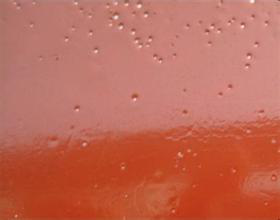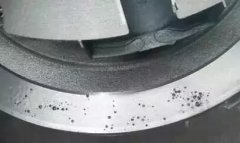In the casting production process, defects are a common occurrence that can result in significant losses for manufacturers. Understanding the causes and applying effective prevention methods is critical for quality assurance. Below are the most common casting defects along with their causes and recommended solutions.
1. Porosity (Bubbles, Choke Hole, Pocket)
Features: Porosity in castings appears as holes within the surface, varying in shape from round to irregular. Multiple pores may form air pockets beneath the surface, often pear-shaped. Choke holes tend to have rough, irregular shapes, while pockets are typically concave with smoother surfaces. Bright pores can be detected visually, while pinholes become visible after mechanical processing.
Causes:
- Mold preheating temperature is too low, causing liquid metal to cool rapidly when poured.
- Mold design lacks proper exhaust, resulting in trapped gases.
- Improper paint or coating with poor ventilation.
- Holes and pits in the mold cavity cause rapid gas expansion, creating choke holes.
- Mold cavity surfaces are corroded and not cleaned.
- Raw materials (cores) are stored improperly or not preheated before use.
- Poor reducing agent or incorrect dosages and operation.
Prevention Methods:
- Fully preheat molds and ensure coatings (like graphite) have suitable particle sizes for breathability.
- Use a tilt casting method to promote even distribution.
- Store raw materials in dry, ventilated areas and preheat before use.
- Select effective reducing agents (e.g., magnesium).
- Control the pouring temperature to prevent cooling too quickly or overheating.
2. Shrinkage

Features: Shrinkage defects are rough holes that appear on the surface or inside the casting. Slight shrinkage consists of scattered coarse grains and often occurs near runners, risers, thick sections, or areas with varying wall thickness.
Causes:
- Mold temperature does not support directional solidification.
- Inappropriate coating selection, or uneven coating thickness.
- Incorrect casting positioning within the mold.
- Poor design of the pouring riser, leading to inadequate metal replenishment.
- Pouring temperature is too low or too high.
Prevention Methods:
- Increase mold temperatures to support even solidification.
- Adjust coating thickness and ensure even application.
- Utilize local mold heating or insulation to prevent localized shrinkage.
- Implement hot spot copper blocks or chills to manage cooling rates.
- Design radiators in the mold or use water spraying to accelerate cooling.
- Use detachable chilling pieces within the cavity for continuous production.
- Add pressure devices to risers and design gating systems accurately.
3. Slag Holes (Flux Slag and Metal Oxide Slag)
Features: Slag holes are bright or dark holes in castings, often filled with slag or other contaminants. They may be irregularly shaped and are typically found near runners or casting corners. Flux slag may be difficult to detect initially but becomes visible after removal. Oxide slag often appears in mesh gates near the surface, sometimes in flakes or irregular clouds.
Causes:
- Incorrect alloy smelting and casting processes, including poor gating system design.
- The mold itself does not generally cause slag holes; using metal molds can help prevent this defect.
Prevention Methods:
- Design gating systems with precision and consider using cast fiber filters.
- Use inclined pouring methods to reduce slag formation.
- Select high-quality fusion agents and maintain strict quality control.
By understanding these common defects and following the recommended prevention methods, foundries can improve their production quality and reduce costly errors. Stay tuned for Part 2, where we’ll cover additional common casting defects and their solutions.
Post time: Apr-30-2024




